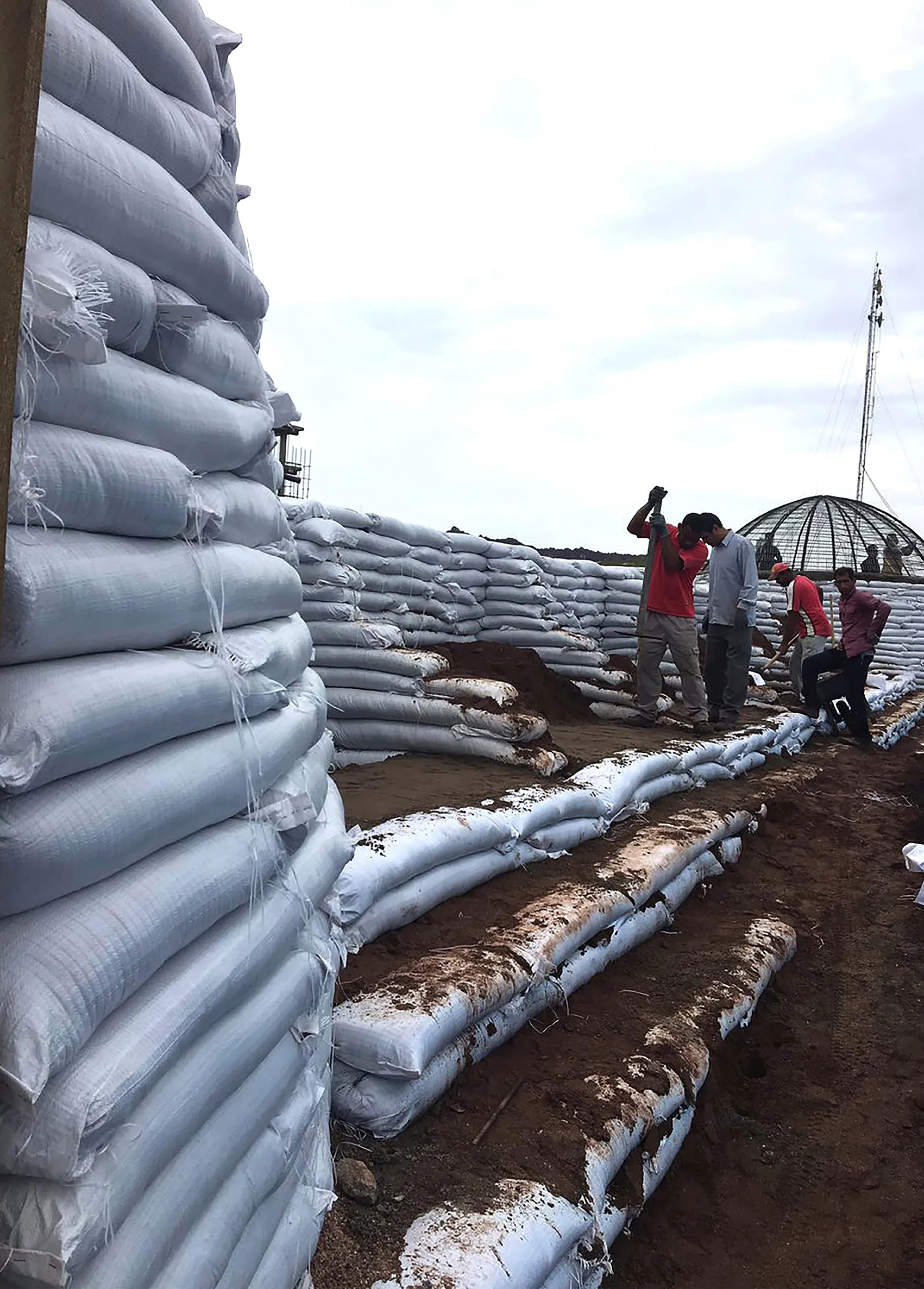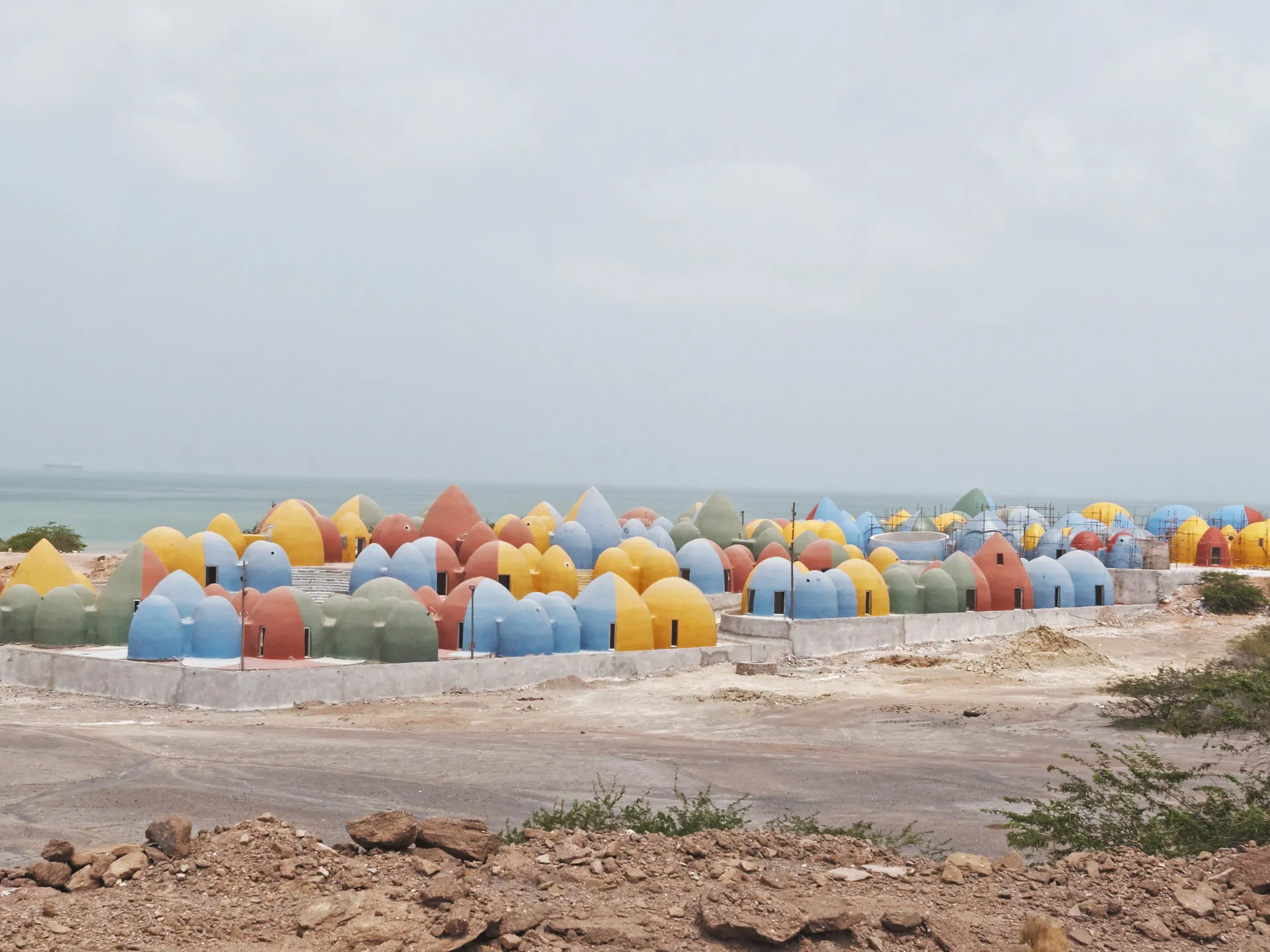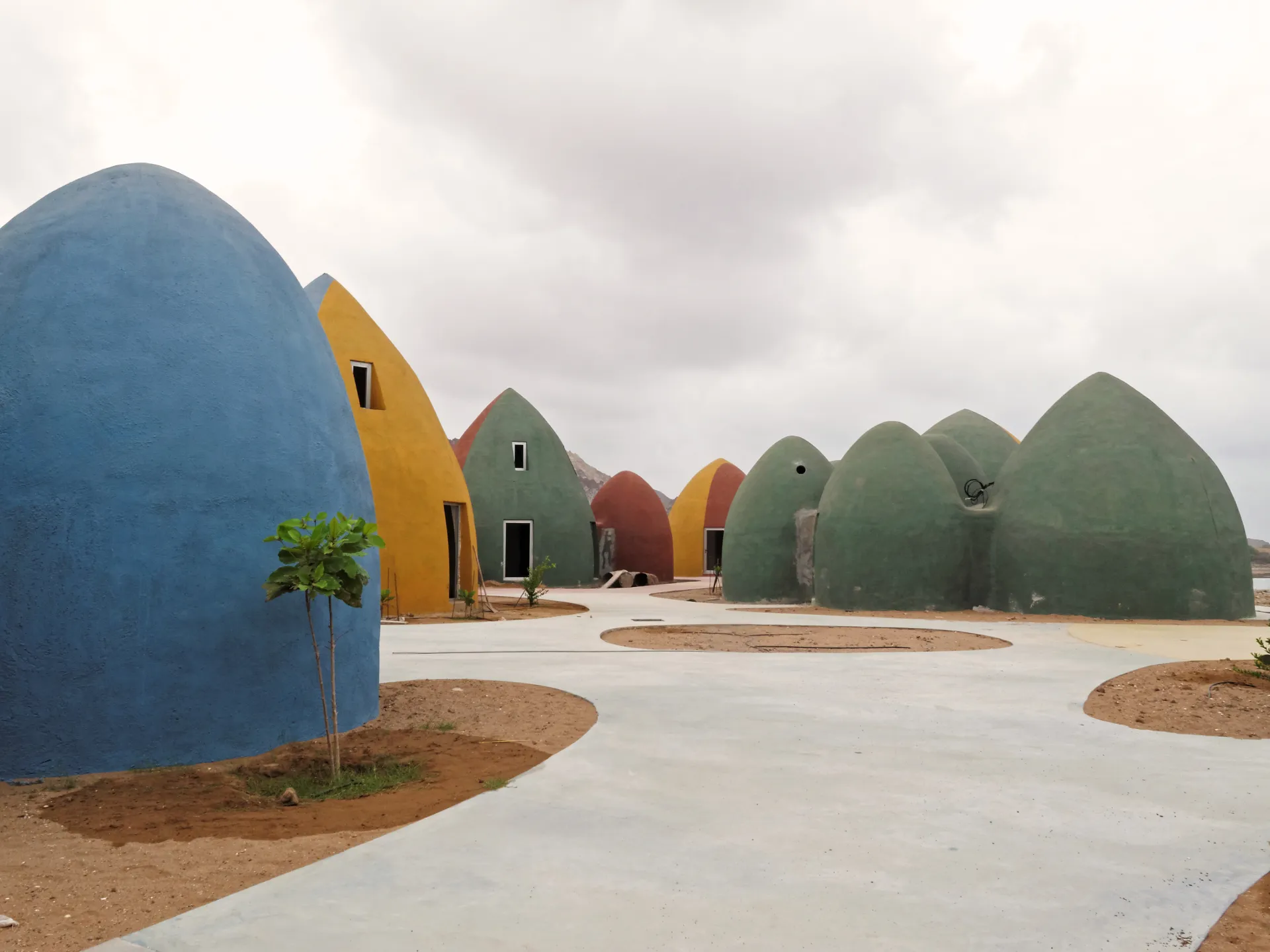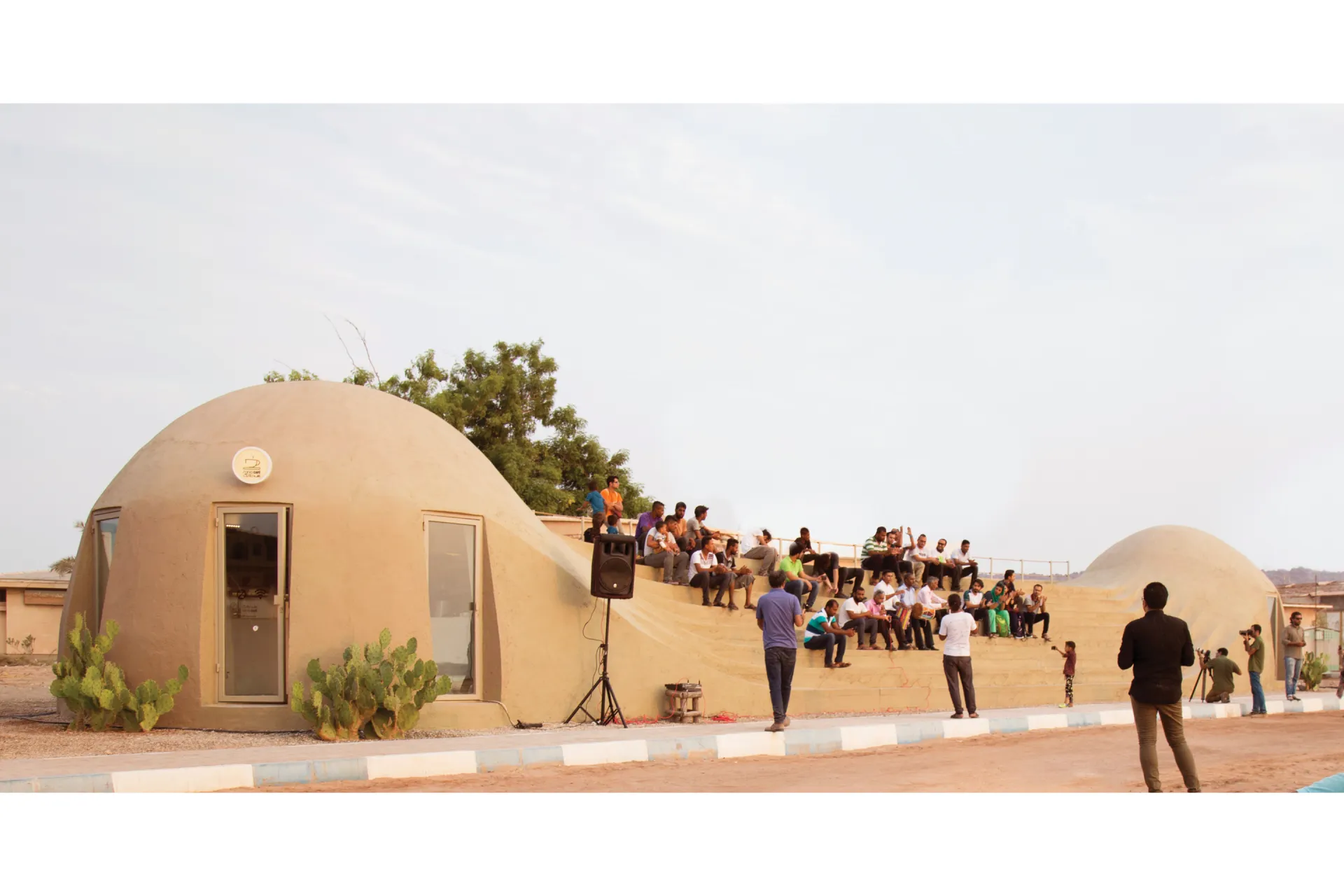


 【獎項 Prizes】 金獎 Golden Award
【獎項 Prizes】 金獎 Golden Award
【國家或地區 Country/Region】 Iran 伊朗
【公司/團隊 Company/Group】 ZAV Architects
【設計師姓名 Designer】 Mohammadreza Ghodousi、 Fateme Rezaei Fakhr-e Astaneh、Golnaz Bahrami、Soroush Majidi
【作品介紹 Description】
在波斯灣,每個伊朗旅客都一定會搭乘遊船至霍爾木茲海峽的特殊小島展開一場旅行。霍爾木茲海峽是位於波斯灣的一個戰略海峽,負責掌控中東的石油運輸。僅需一小段航程,旅客便會來到霍爾木茲小島,接著對超凡脫俗的美景嘖嘖稱奇。那改變大海顏色的近乎超現實的五彩沙灘和外星形狀的山群,讓人宛如置身在另一顆星球上。 令人驚訝的是,這座引人入勝的觀光戰略島嶼上的居民卻面臨著巨大的經濟困境。失業人口節節攀升,工作機會少之又少,導致他們只能利用自己的船隻從事非法的販賣活動。 霍爾木茲島的現況是由一半公營機構雇用ZAV建築師事務所進行一系列的城市開發項目,其目的是為提升島上社區的能力。透過使用和升級回收易於獲取的物質資源及當地工藝,加上先前的研究知識,ZAV建築師事務所試圖打造一永續、前瞻的調整性設計方案,並將焦點集中在公共空間的文化和旅遊潛力,期盼在為社區帶來經濟收益的同時,更能為社區現有的資產建立起自尊和知名度。 從臨時性的社區中心和Rong活動中心到富含當地故事的小型博物館,還有近期的Majara文化和旅宿會館,這些城市發展計畫將當地居民融入設計和建造的過程,甚至讓他們在往後持續負責經營和維護這些設施,並同時打造公共空間以改善他們的生活品質,為他們帶來歸屬感。Majara是一個將住宿單元和公共空間分離的縮影,然其最重要的構成要素仍為能辦理各種不同公共活動和項目的各式開放空間。 由島上令人驚嘆的自然風景圍繞,建築物的外形和美感設計傾向汲取大自然的地形輪廓線和色彩,並經過徹底和仔細的研究,讓建築形式成為土地和自然景觀的延伸。這正是我們選擇土壤作為主要建材的其中一個原因。 這座氣候乾燥的島嶼缺乏水資源和植被樹木,而富含礦物質的彩色土壤是唯一一種可大量使用的廉價材料。這些計畫採用並改良伊朗建築師納德.哈利利(Nader Khalili)於80年代為美國國家航空航天局一項火星生存計畫所開發的超級泥磚土袋創新技術。此項簡易技術僅需使用土壤和袋包,加入一些初步的進階技能便可完成。這使許多住民得於各階段被僱用參與項目,更讓許多相同的建築工人後續再度被僱用來執行這些計畫,進而幫助當地的經濟成長。它也同時是一套持續性的建造方法,可減輕整個國家的國內生產總值壓力。 遵循建築技術,土袋按蛋形的結構排列而成,在高度抗震且與周圍的環境相匹配之於還同時增強其神秘的形狀和色彩。 也因此,本建案的美感設計由建築過程驅動,並以衝動的方式自然生成。 在島上的各處分別強調了顏色的使用。舉例來說,作為提高貧困城市結構品質的第一步即是讓居民親身參與。我們在城市其他地方的建築外觀塗上顏色,讓居民知曉他們可以於自己居住的街坊做出的改變。在霍爾木茲島上,這個位於伊朗較不發達且缺乏專業的人力和物力的南部地區,在半官方機構的領導下,我們更新了伊朗建築師納德.哈利利(Nader Khalili)於80年代開發的這項無須任何特殊技巧、僅運用簡單的大量泥土製作的超級泥磚土袋創新技術,並將其使用在一系列的城市發展結構中,給社區帶來了重大的社會影響。超級泥磚的簡單建築技術讓霍爾木茲島的居民能親身參與並進行此案各階段的建造和維護工作,進而提供他們各式各樣的工作機會和經濟收益。從臨時性的社區中心和Rong活動中心到富含當地故事的小型博物館,還有近期的Majara文化和旅宿會館,就文化和經濟層面上來看,這些發展將當地居民的生活和探訪該島的外來遊客相互交織在一起。
In the Persian Gulf, Iranian tourists never miss an opportunity to take a boat trip to a certain tiny island in the Strait of Hormuz, the strategic strait in the Gulf that controls the shipment of petroleum from the Middle East. After a short ride, they reach the other-worldly landscapes the island of Hormuz offers, with surreal multicolored sand beaches that change the color of the sea and mountains of alien shapes, as if landing on another planet. Surprisingly the local inhabitants of the beautiful, touristic and politically strategic island struggle economically, suffering from unemployment and, without being offered much of a choice, getting involved in illegal trafficking activities using their boats. Presence in Hormuz is a series of urban developments by a semi-public institution that hired ZAV Architects, in order to empower the local community of the island. By favoring the use and upcycling of easily available material resources, local craftsmanship and precedent research and knowledge, ZAV attempts to create sustainable, future-proof and adaptive design focusing on cultural and touristic potentials of the public space, to not only bring economic gain to the community but also generate self-esteem and awareness about assets the community already possesses. These projects, ranging from the temporary Community Center and Rong Event Center, to small museums with local stories, and the more recent Majara cultural and accommodation center, integrate local people in the design and building process, and even later in running and maintaining the place, while creating common spaces for them through which they can improve their lives and gives them a sense of belonging. Majara is a microcosm of spatially separate accommodation units and communal spaces, but its most important component is the open spaces in between which host different events and public activities. Surrounded by the astounding natural landscapes of the island, in designing the buildings the forms and aesthetics tend to absorb the topographic lines and colors of nature, which were subject to a thorough and careful study, so that architectural form becomes an extension of land and natural landscape. This is one of the reasons why soil was chosen as the main material for building. The island is arid and lacks water resources, vegetation and trees, and the only affordable material abundantly available is soil, rich in minerals and very colorful. The projects use and update the innovative technique of Superadobe earth bags developed by the Iranian architect Nader Khalili in the 80s for NASA for a program to live on Mars. The simple technique, which needs earth and bags only and requires little advanced skills, allowed to employ many of the inhabitants in different stages of the projects, and many of the same construction workers were and will later be employed for running the projects, thus helping the local economy. It is also a sustainable construction method that puts less pressure on the GDP on a national level. Following the building technique, the bags are arranged to form egg-like structures, strongly earthquake-resistant, matching the geography of the surroundings, and enhancing its mystical shapes and colors. The aesthetics of the project is thus driven by the building process and is generated impulsively. The use of color is accentuated in different parts of the islands. For instance, as a first step towards improving the quality of poor urban fabric with the participation of the residents themselves, in some parts of the city color is being applied to the exterior of the buildings in order to show the inhabitants the difference that it can make in their neighborhood. In the island of Hormuz, in an underdeveloped Sothern region of Iran with little expert human and material resources available, the innovative building technique of Superadobe developed by Nader Khalili in the 1980s, which does not require any special skills and uses only simple abundant earth, has been updated to be used in the structure of a series of urban developments led by a semi-public institution with great social impact for the community. The simple building technique of Superadobe has made possible the participation and engagement of Hormuz inhabitants in the different building stages and maintenance of the project, providing them with jobs and economic gain. These developments, ranging from the temporary Community Center and Rong Event Center, to small museums with local stories, and the more recent Majara cultural and accommodation center, interweave the lives of the locals and the many tourists that visit the island on both a cultural and economic level.



